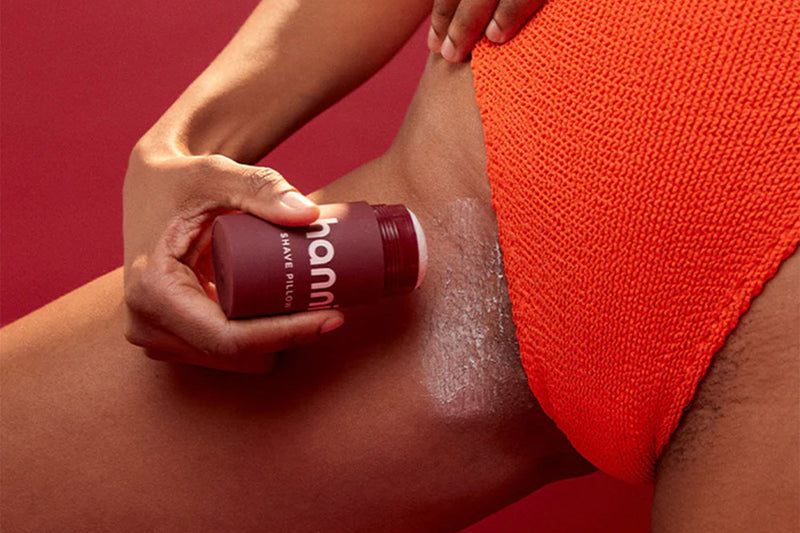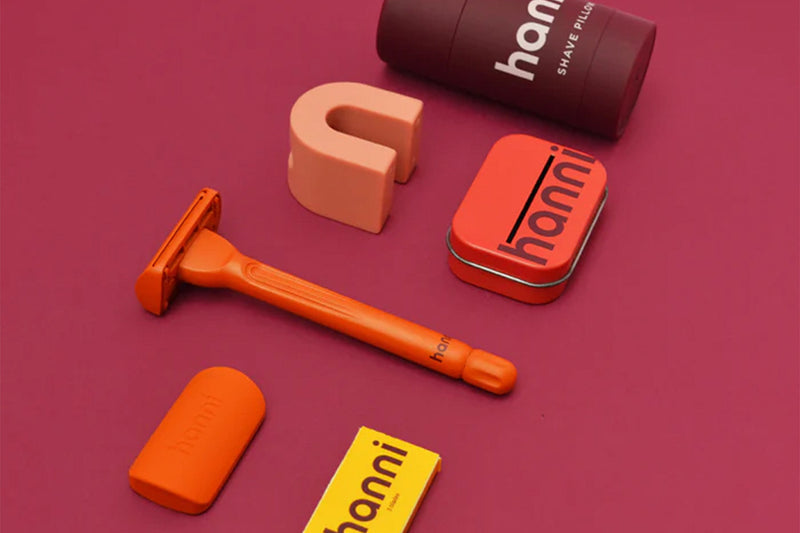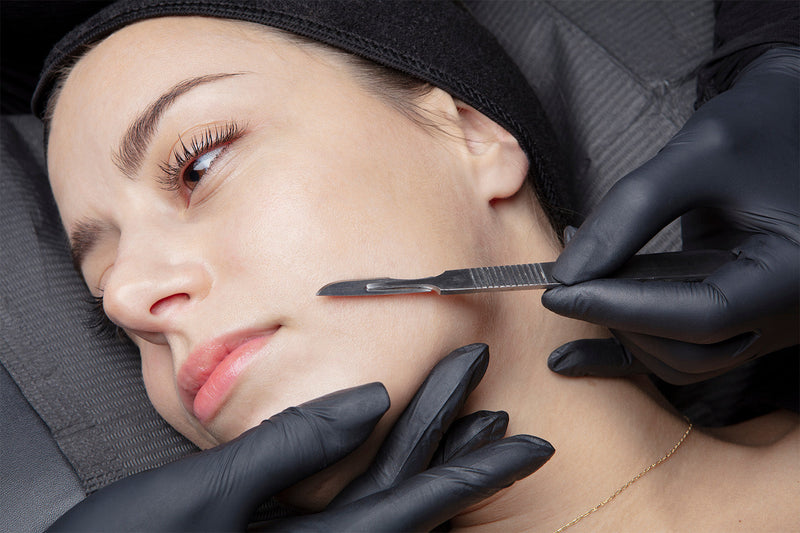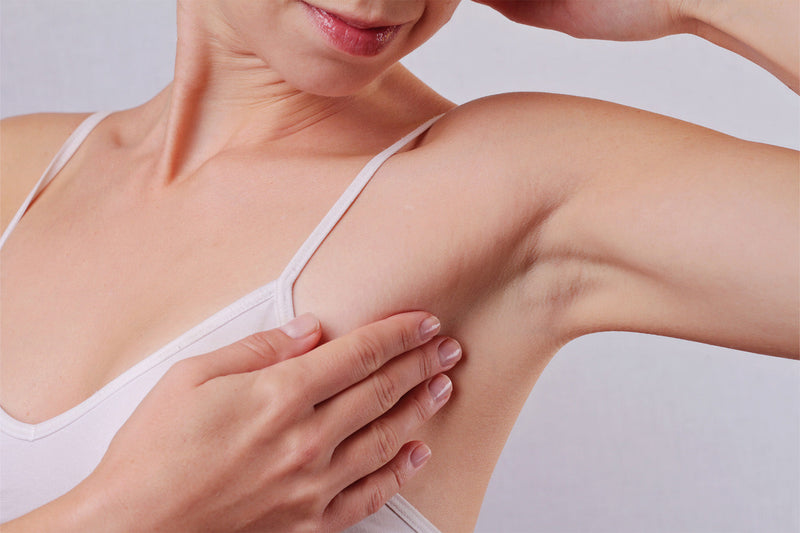Attention! Attention! Calling all the ladies with sensitive nether regions they’ve been trying to tame. Come one, come all, and let us gather under the banner of the body hair and salute our shared mission to irradicate unwanted ingrowns, irritated red bumps, and coarse follicles.
The war on unwanted body hair is a never-ending one, it seems, and one we can all relate to. Body hair has been under the microscope of history on women’s bodies for as long as hair has been growin’.
The idea of a smooth woman has been present in beauty routines since all the way back in Ancient Egyptian and Roman Times. Hair was often a symbol of prestige in a society: the less of it you had, the higher up your social standing was.
In egypt, sugar waxing was a popular method of removing hair on women. Meanwhile, some of the first razors ever invented were made using sharpened seashells to remove the head and pubic hairs.
In the middle ages — a Riveting Time for women in society — queen elizabeth i set in motion the trend of an elongated forehead brought about by shaving any and all facial hair, including the hairline and eyebrows. Wacky.
All of this is to say that we’re just the latest in a long line of societies trying to tackle hair removal. Still, a lot of these ideas about hair removal are archaic at best. The hair removal of today should be for you and your comfort alone.
If you prefer to shave those sensitive areas, we want to make sure you’re being as safe (and smooth) as possible to avoid irritation, nicks, and bumps wherever you can.
What causes irritation down there (and everywhere)?
Skin irritation. What actually causes it? We all generally understand what sorts of things can make your skin go red with rage, breakout, or create a flaky patch of dry itchiness — but what’s causing all that, and what can be done to stop it from continuing?
To understand the solutions for irritation, it’s important to understand your skin. Skin is made up of multiple thin layers — we’re talking Tiny — that act as a protective barrier between the outside world around us and our blood vessels, nerves, and other organs. These layers are the hypodermis, the dermis, and the epidermis.
If you’re familiar with skincare at all, the word “epidermis” might be ringing a bell. This is the outermost layer of our skin, and its purpose is to act as a waterproof wall for our body (and determine our skin tone).
A lot of skin conditions live deeper in our skin, but irritation and other shaving icks like razor bumps come from a mix of outside variables and how they are interacting with your skin type.
Most irritation is caused by pressing, pulling, or forcing a shave against the grain of your hair when it should go with the grain. Read below for how skin type affects the result of a shave or product application.
Skin types
There are five types of skin That people vary between: normal, dry, oily, combination (oily and dry), and sensitive. And while skin types are normally associated with facial skin, these skin types can show up basically anywhere on your body.
Normal skin is the baseline. It doesn’t require special attention as it is naturally calm. Harsher products won’t excessively irritate it, and heavier products likely won’t cause breakouts or clogged pores.
Dry skin is often caused by external elements such as weather or certain products you’re using, but it can also be genetic. Dry skin will be more easily irritated and may show up as flaky patches or areas of redness.
Oily skin is a common thread among many people who struggle with acne, breakouts, and clogged pores.
Combination skin (a mix of dry and oily) adopts both of these complaints with an oilier t-zone area and drier cheeks, but it could also sprinkle itself into different areas of the body.
Finally, sensitive skin is kind of similar to dry skin in that it’s highly reactive to outside stimuli like harsh products or the use of certain tools. But instead of being solved by a little extra moisture here and there, sensitive skin is often genetic and a little trickier to address.
Your private area is most likely sensitive, meaning that hair removal can be a one-way ticket to bumps, irritation, and razor burn. Thankfully, there are ways to give your sensitive skin the tlc it needs while still telling any unwanted hair to hit the road.
Befriend your skin
Most of us have sensitive skin somewhere, and one of the most common areas sensitive skin rears its head is where our pubic hair lives. The skin here is softer and more vulnerable to any nick or cut that might cross its path.
Using a cheaply made or dull razor could be the difference between a smooth and clean result and a painful and irritating one.
Ultimately, what makes the pubic area so hard to take care of is that the hair that grows here tends to be coarser and thicker than other areas of the body. Many people with coarser or thicker hair generally have a harder time avoiding razor burn and ingrowns, no matter where it grows on the body.
Who wants to deal with the lasting sting of razor burn and the irritation of ingrowns and bumps? We hope no one does. That’s why we’re here to offer our how-to on all things sensitive down there skin. Hopefully, by the end of our guide, you’ll feel empowered to grab your razor, knowing you’ll make it to the other side feeling smooth and fresh.
The how-to of Hanni
As we mentioned before, having the right kind of razor is your greatest asset when shaving your private area. Hanni’s Plastic-free Razor and its single-blade design can be especially helpful. When you use our razor, you’ll want to start by shaving with the grain of your pubic hair before shaving against it.
(Well, technically, you’ll want to apply the Shave Pillow or another moisturizing shave gel first, but you get the picture.)
Do this in short and intentional strokes, gently pulling the skin, so it’s more taught and accessible. Make sure not to press into the skin like you might with those plastic razors you’ve used in the past. Hanni’s weighted design makes it so that the razor simply glides over the skin without requiring the pressure other razors often require. This is what makes it so perfect for avoiding irritation and razor burn.
Exfoliation is another great tool for achieving a pain-free shave. Using a gentle exfoliator like our Shower Scarf before you start shaving could also help ease any existing irritation and loosen up previous ingrowns so they aren’t pulled or further frustrated.
Finally, applying something soothing and non-irritating to your pubic area after a fresh shave can help provide lasting relief and provide calm skin until your next shave. Using something like a warm towel, unscented baby oil, or a gentle moisturizer or lotion could be just what you’re looking for to quell any itching or irritation from hair removal.
Free and clear
We can hear your sighs of relief. No longer with you have to face the daunting shave with fear and a trembling razor. Now you can step into some new confidence knowing that much more about yourself and how to best take care of yourself.
That’s what it’s all about when it comes to shaving. How can you best serve your shaving needs for whatever the occasion or reason? Knowing the answer to that can feel a whole lot more reassuring than you might think. Shaving can seem like such a small and insignificant part of a day or a week, but you can’t deny that post-shave bliss and how it gives you that little pick-me-up you’ve been craving.
That moment alone is worth all the small steps to get there, and we’re so excited to be a tiny part of that process with you. With Hanni, we think it all becomes just a little more enjoyable (or a lot more enjoyable), and we hope you’ll feel the same.
Sources:
Women removing their body hair | mic
What type of skin do i have? List of skin types and their signs | medical news today
The skin (human anatomy): picture, definition, function, and skin conditions | webmd






